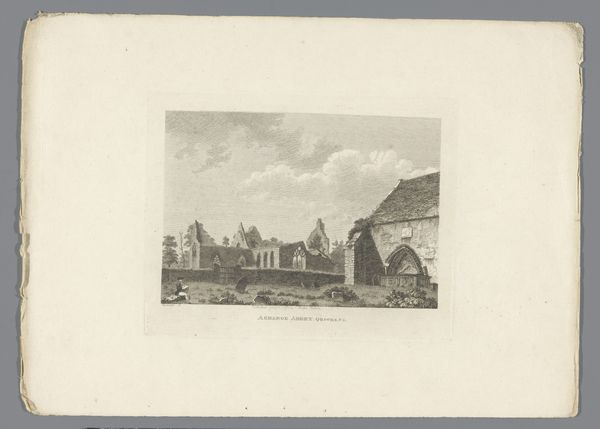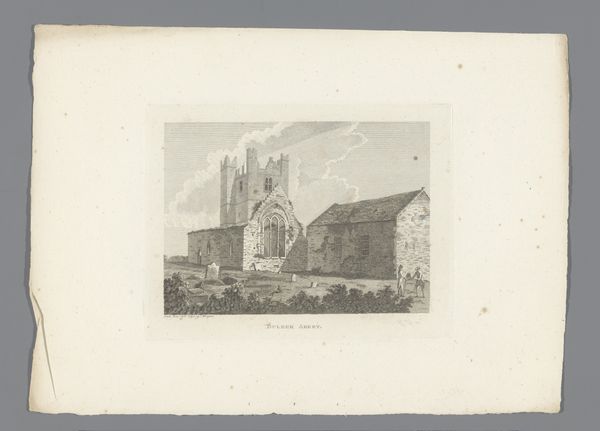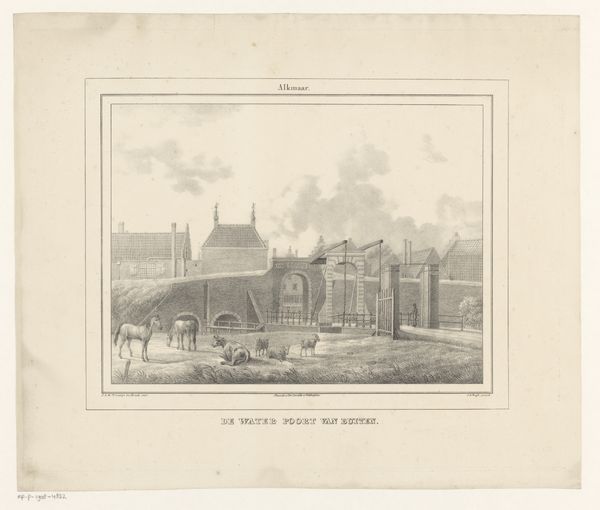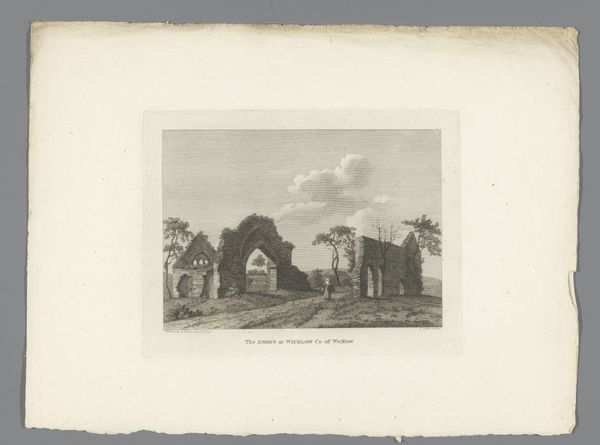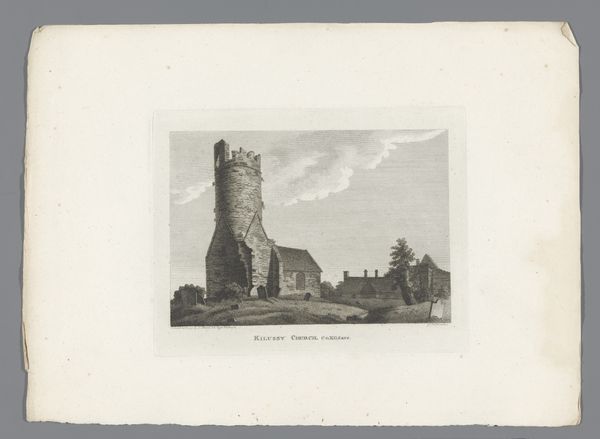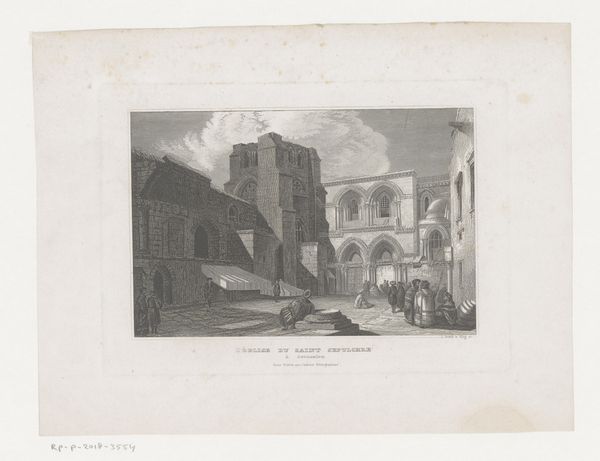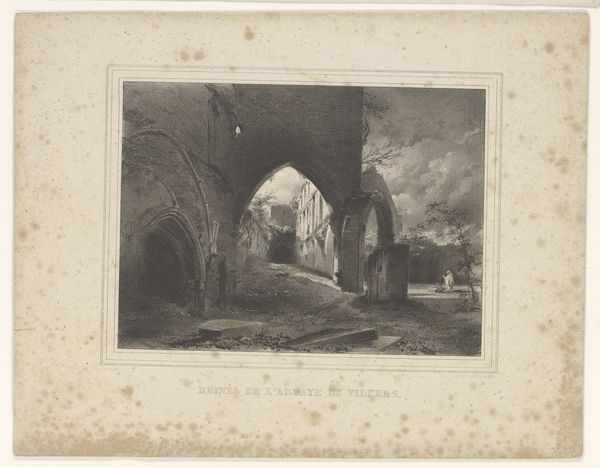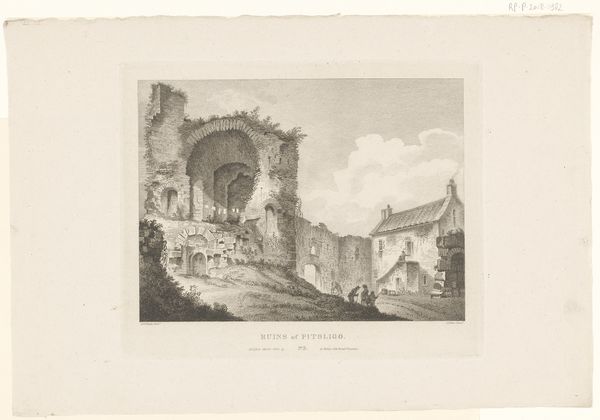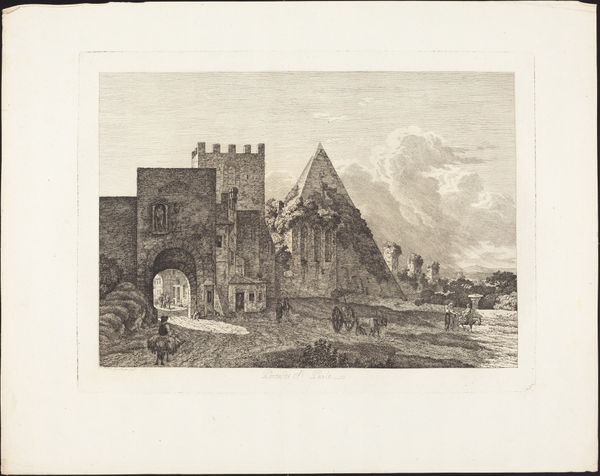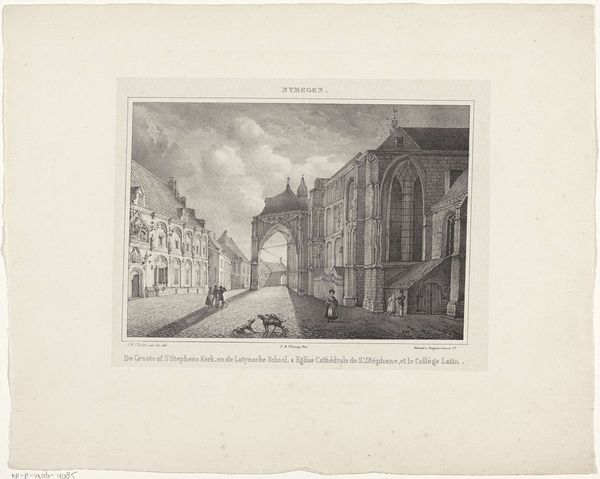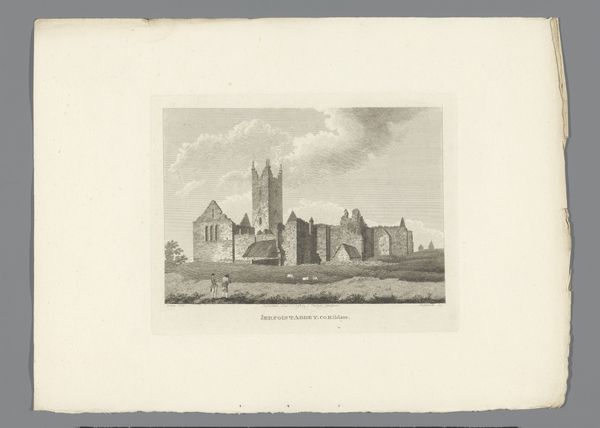
drawing, print, etching, paper, architecture
#
drawing
# print
#
etching
#
landscape
#
paper
#
romanticism
#
history-painting
#
architecture
Dimensions: height 153 mm, width 200 mm
Copyright: Rijks Museum: Open Domain
Curator: Here we have "Gezicht op de ruïnes van de abdij van Strade", a print, etching, and drawing on paper by James Newton, possibly from 1794. The image depicts a view of the ruined Strade Abbey. Editor: My initial impression is one of solemnity. There's a stark, almost melancholic beauty to the way the etching captures the abbey in decay, highlighting the passage of time and the impermanence of human endeavors. The stark light and shadow accentuate this feeling. Curator: Precisely. The romantic sensibility of the period focused intently on ruins. This wasn't just documentation; it was about evoking specific feelings tied to the past and loss, often within broader sociopolitical contexts. The etching process allows for that level of detail that underscores both architectural features and the ruinous state. Newton’s selection of this subject is an intentional choice to make the abbey a symbol. Editor: And a commentary on power, perhaps? Religious institutions often held immense power, and seeing them in this state of decay allows for a reconsideration of that history and, perhaps, the effects of that power on the wider community. Also, this Romantic vision has an aesthetic purpose; framing ideas about Irish identity and history for British audiences. Curator: Absolutely. The architecture of the abbey itself – the arches, the gothic windows – these are markers of a particular period and societal structure. Ruins also often came to the forefront as part of complex colonial histories, like this. By presenting the abbey in ruins, the work makes subtle points about control and transition. Newton himself played an important role within institutions producing artworks for the public sphere. Editor: The human figure is almost insignificant. Its solitude further highlights the isolation of these ruins. Perhaps Newton's artwork attempts to reconcile this past with the era in which he lives? There seems to be some yearning in the act of memorializing ruins, too. Curator: You’ve touched on a key aspect. The Romantic era's fascination with ruins speaks volumes about their world: anxiety in the face of rapid industrial change and its impact on existing structures, power systems, social relationships. The romantic aestheticized this anxiety. Editor: Seeing it from this angle, there are further dimensions to the commentary beyond aesthetic interest. It’s amazing how art allows us to see history layered within it. Curator: Yes, and hopefully that gives people here today some additional perspective. Editor: Indeed, I know my understanding has expanded.
Comments
No comments
Be the first to comment and join the conversation on the ultimate creative platform.
